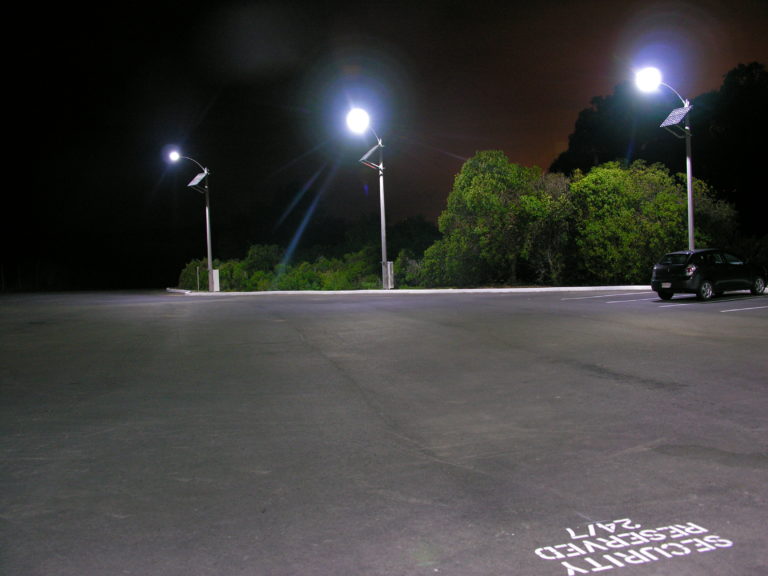Case study March 2017
With the state’s aggressive environmental mandates to consider, an energy facility in California required LED parking lot lights that met lighting requirements but also avoided the lengthy approval process for trenching in an environmentally sensitive area. The existing lots suffered from old cables and long electrical lines that resulted in inadequate lighting that needed replacement. Situated beside a 3,000-acre state park with threatened and endangered species, the facility would have had to engage in a rigorous environmental screening process for any project with the potential to disturb the environment. Additionally, a federal government property nearby meant permits to trench in the area would require a lengthy approval process.
California, USA
EverGEN™ 1520 Solar LED Lighting with BetaLED™ LEDway™ fixtures

With no need to trench, the Sol EverGEN 1520 with BetaLED LEDway fixtures offered an option for solar LED parking lot lights that allowed the facility to avoid the costly, time-consuming permit procedures required for trenching and cabling—a savings of $1.5 million. Additional cost savings included reduced maintenance requirements; previously, the onsite maintenance was limited, meaning the facility had to dispatch crews from outside the area to fix and maintain equipment. Due to the five years of battery life and maintenance-free design, the EverGen 1520 system offered significant cost savings for parking lot lights.
Environmental concerns were also addressed with the new solar LED parking lot lights, as the delicate parklands nearby could remain untouched. Further, the full cutoff optics of the BetaLED LEDway fixture addressed light pollution issues that affected the sensitive park setting.

